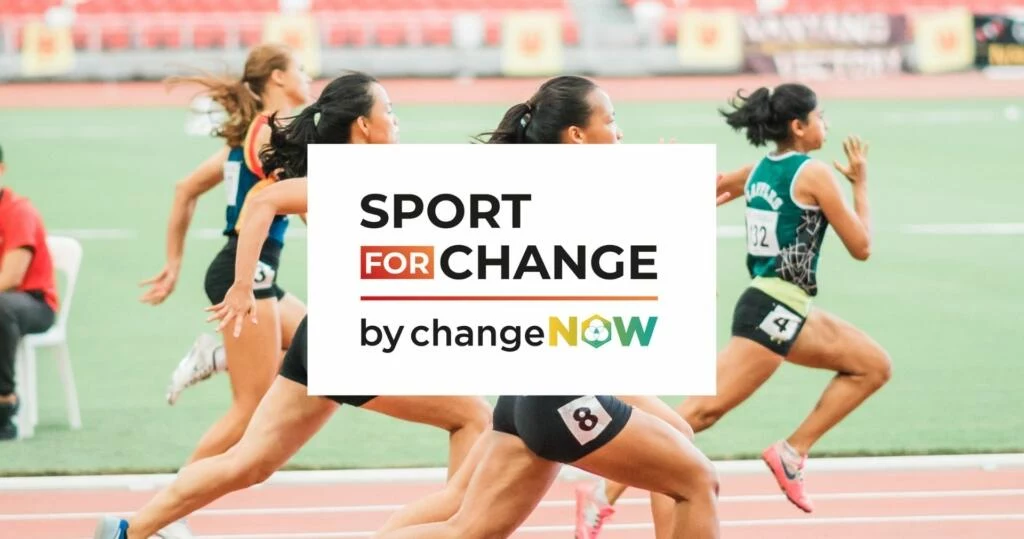Previously in charge of sport and spokesperson for WWF France, Mael Besson also worked at the Ministry of Sports for the Sport and Sustainable Development mission, where he piloted the creation of the Charter of 15 eco-responsible commitments. The daily practice of sport, major sporting events, and the economic model of sport are all actions that need to be rethought in light of the climate and environmental challenges we face.
What are the main issues and risks for sports-related to climate change?
There are indeed several consequences of climate change on the sport. The increase in temperatures and heat waves that impact sports practice, the management of more than 40,000 grass fields or 60,000 sports halls, the rise in sea level that will require the relocation of ¼ of the sailing clubs in a global warming scenario of +4°, the decrease in the level of snow cover, the increase in the number of extreme meteorological phenomena, the amplification of pollution peaks, etc. The hotter it is, the less we can do sports. When I was at WWF France, we carried out a study on the impact of climate change on sports to raise awareness among decision-makers. Suppose we take a scenario where France’s average temperature rises by two degrees. In that case, we risk having up to 24 additional days per year where the temperature will exceed 32 degrees and where the practice of sports will be discouraged for the general public. If we reach a temperature increase of four degrees, we will have two months fewer sports practice per year. The choice of the 32 degrees reference is a recommendation that comes from the health department of the Ministry of Sports because we know that beyond that, there can be health risks, especially for amateur practitioners.
What is the state of awareness of climate and environmental issues in French sports?
Awareness is present. More and more sports players are sensitive to and even concerned about environmental and climate issues: they want to reduce their impact and give meaning to their actions, particularly by contributing to the ecological transition. This awareness is essential. The question of environmental and climate issues is not ideological but Cartesian. We have planetary limits: what can we do to avoid exceeding them? Isabelle Autissier often draws a parallel with sailboat crossings. When our food supply is finished, so is the voyage. The planet is the same. It may regenerate itself, but if we consume too much, we may have trouble completing the journey. It will be the same for the sports practice. It is in the interest of sport to become a defender of the climate.
"It is in the interest of sport to become a defender of the climate."
Maël Besson, Expert in sports and sustainability Tweet
Is the mobilization of sports actors up to the challenge?
Sports particularly sports entertainment, shape our practices, behavior, and, more generally, lifestyles. The mobilization of sports is essential to engage in the ecological transition. The eco-responsible behaviors (or not) in sports shows and advertising are reproduced by imitation. And the more these behaviors are reproduced, the more they become the norm. A positive example is the veggie burger of Paris 2024. Faced with the need to eat less meat and better quality, and advocated by a federative event like the Games, it participates in normalizing the flexitarian diet, which we must respect the planetary limits.
On the other subjects, we still need all the technical solutions, and a large part of cultural transformation is also necessary: less travel review our ideals of social success which are today to go practice at the other end of the world in magnificent sites… We need to check our practice of sports so that it becomes local and seasonal.
Where do you start if an event organizer wants to commit to more responsible practices?
It must begin by understanding its most significant impact and what levers it can use to reduce it, with the first central question being: do we need it? Furthermore, it is vital to consider the different types of impacts. The carbon footprint, of course, but also soil pollution, the impact on biodiversity or deforestation, the impact on natural sites (disturbances, developments), etc. To give a figure on the carbon footprint of sports events: between 70 and 90% of greenhouse gas emissions are due to transport. The first action must, therefore, naturally be focused on this item.
Is organizing major sporting events compatible with the climate and environmental challenges?
What is certain is that we must all reduce our greenhouse gas emissions, including major sporting events. However, there is no question of canceling these events, which are indispensable at the societal level. No civilization in the world does not need large gatherings; they allow a communion of people. But these events must take place within planetary limits. The question is not: should we not hold major sporting events? But how can we make significant sporting events within the planetary boundaries?
Transportation, particularly air travel and food, are major sources of greenhouse gas emissions. Paris 2024 is setting the bar high with its Vision for Sustainable Games Catering based on a low-carbon catering offer. Finally, infrastructure construction also emits many greenhouse gases, mainly because of the concrete. By reducing new construction as much as possible, Paris 2024 limits its impact compared to other Games, such as those in London, which had built a lot.
What might major sporting events look like in 2050?
Authentic events, consistent with all social and environmental issues. Events that can be enjoyed and consumed locally and in season. We need to be more harmonious and coherent with the rhythm of nature and its fabric of the seasons, its capacity for regeneration, and resilience. This means accepting that we can only see skiing in winter and the mountains, acknowledging that some regions have specific sports and everyone has access to sports but not necessarily to the same sport.
Paris 2024 is aligned with the Paris Agreements and is taking the right path to get there, but we know that after 2024, four years, eight years later, the reduction trajectory will have to continue!





